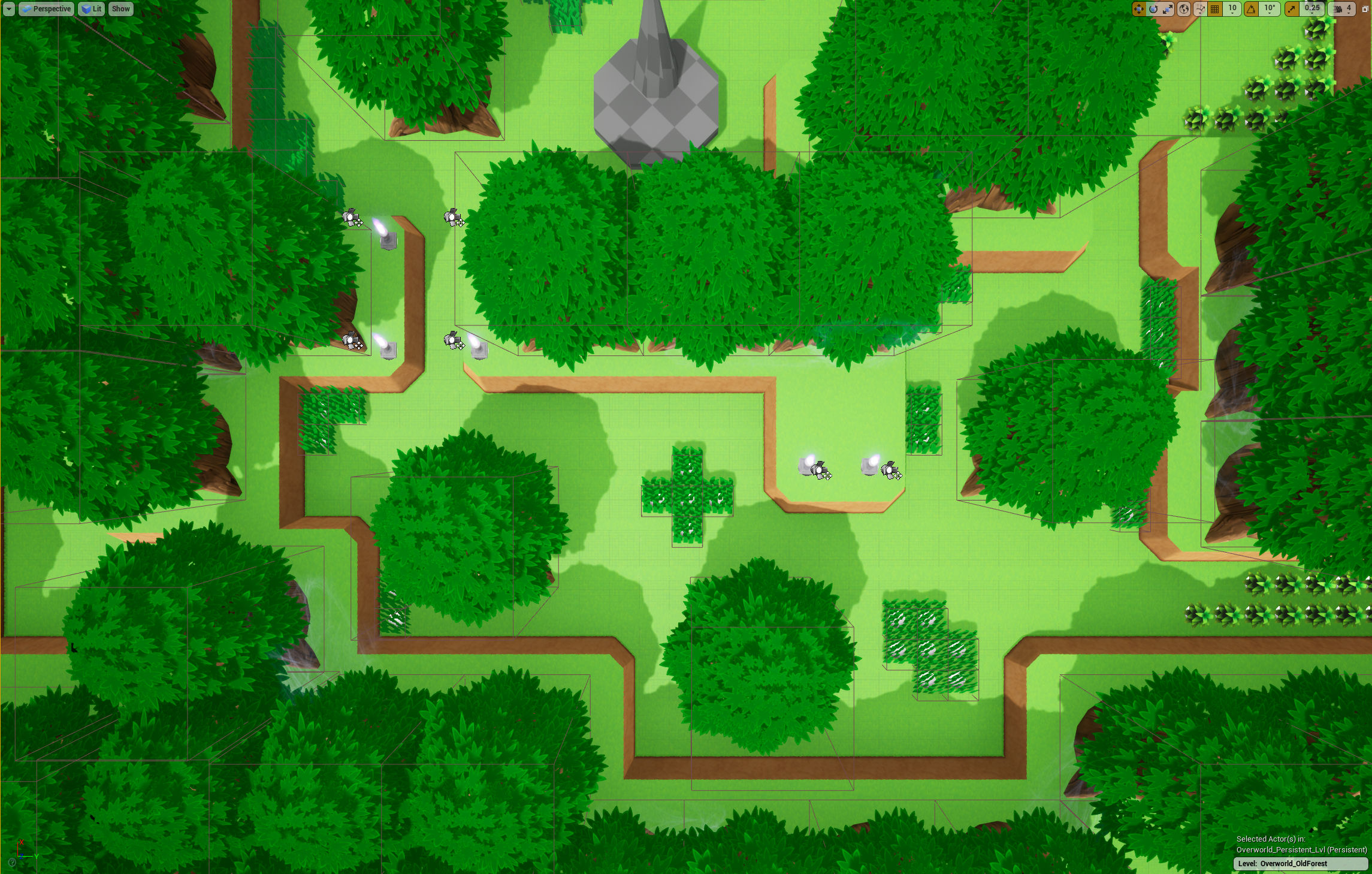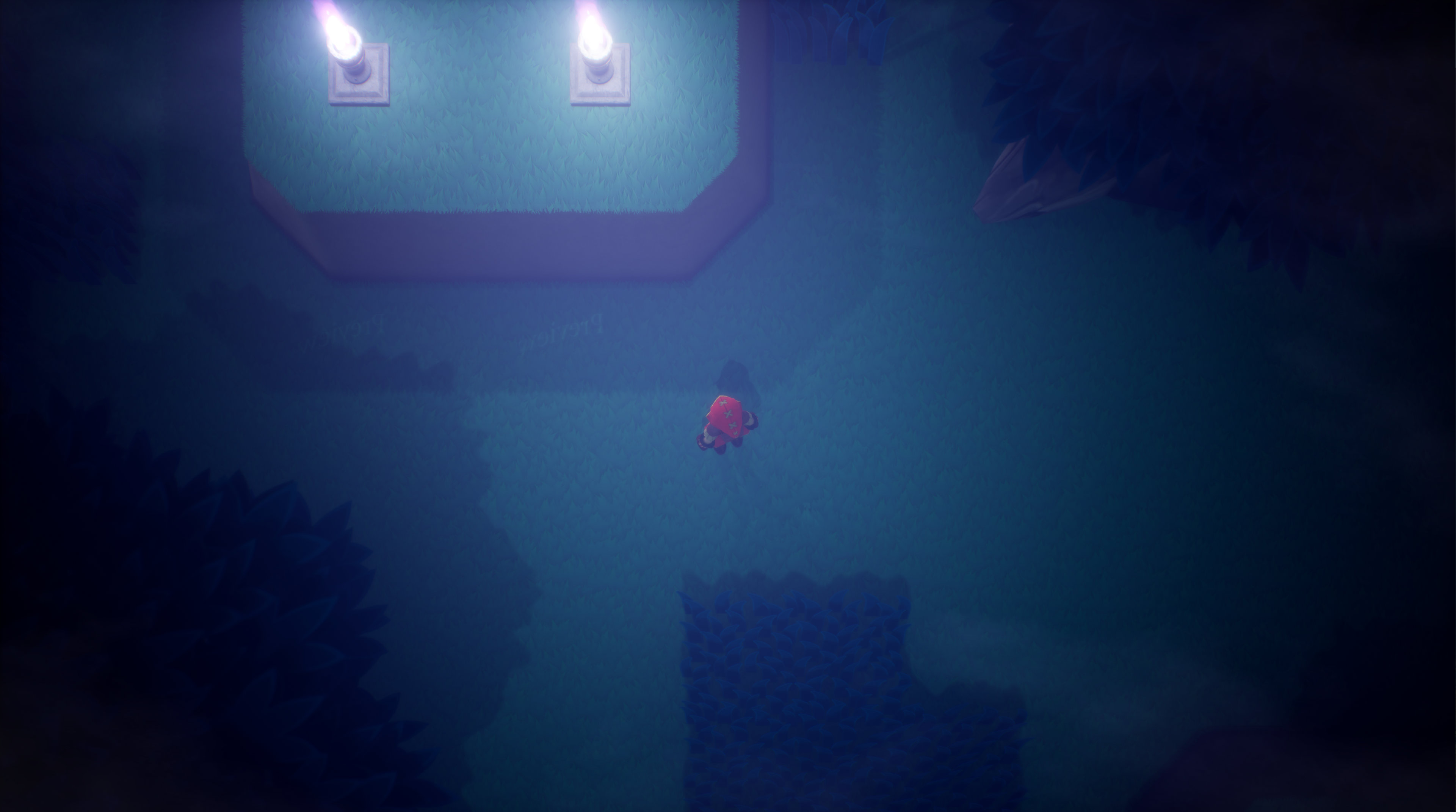Archive:
The main reason for jumping on UE 4.26 was to try out the new hair stuff. Today was the day!
Long story short, after burning 4 hours trying to work out how to export Alembic and import it into UE, I did, finally, get some hair onto an NPC (the rat). And after another couple of hours tinkering, I got it looking vaguely OK.
And then I tried it in the build and it absolutely destroyed perf, so I deleted it all.
No hairy rats for you!
(Oh, and I fixed a couple of UI bugs...)
I've not hit a dead-end like this in a long, long time… But it happens.
Hair was gonna be the topic of my next vlog, so now that’s not happening I need to pivot to the next “exciting” thing on the list: Volumetric fog and particles…
The Old Forest (dunno when it becomes the New Forest, maybe in a sequel) is meant to be foggy, and the Dungeon in this location is going to be built around a similar idea.
Up to now I was leaning heavily on the post process volume to do all the lighting and palette work, but it’s obvious that’s not going to cut it. So, I ripped all that out and made a new set of materials, with a new palette, and “painted” the entire location.
Before:

After:
My game world has a sun, a moon, and a skylight (for bounce), that are all angled, and coloured, using curves. The curves are indexed by the time of day, through a DayNightController. It’s a nice and clean system, that I’ve written about before on the blog.
If I want to create a dark and spooky forest, I’ll need to be able to blend between different Post Processing Volumes and different lighting setups.
Today I wrote a wrapper class for the post process volumes, that can reflect the volume’s blend weight, and hold a map-specific struct of curves for the lighting. I also modified the DayNightController to be able to use the current, default lighting setup, or blend between two different setups.
It works really well.
I also made a PostProcess material for the Forest’s volume, that multiplies a couple of 2D cloud textures that are rolling around on a funky sine (very very old school, but I like it) and started work on the volumetric fog.
Lots of leavers to pull, to get this looking just right, but the first pop isn’t a million miles away from where I want it.

The fog isn’t bounded, meaning it’s visible in all map locations, so I need to be able to blend it along with the lighting and post.
I extended the wrapper class from yesterday to hold fog components, and use the blend weight I was already calculating to lerp across the density values. Means my wrapper class is now badly named, but, it works like a charm!
I couldn’t get the post process material for the screen overlay to blend correctly. For some reason the sine offset into the texture sampler runs at different speeds when it’s actively blending. I tried material parameter collections and dynamic material instances, but neither worked. In the end I just removed all the Sine based UV gubbins and went with a straight UVpanner. To be honest, the shader is faster and you wouldn’t be able to tell the difference unless you stared at it for a couple of minutes (the direction would never change). I have absolutely no clue why this is happening, though.
Made some new effect instances, for impacts, that match the updated colour palette on the foliage, and made a new blend material, so I can vertex paint the ground to create a bit of a smoother blend.
The end result is pretty good:
Next week I’ll start adding the volumetric particles, and get some better lights into the map…
Musings, random thoughts, work in progress screenshots, and occasional swears at Unreal Engine's lack of documentation -- this is a rare insight into what happens when a supposedly professional game developer plans very little up-front, and instead follows where the jokes lead them.
Journal IndexFriends:
If you like any of my work, please consider checking out some of the fantastic games made by the following super talented people: